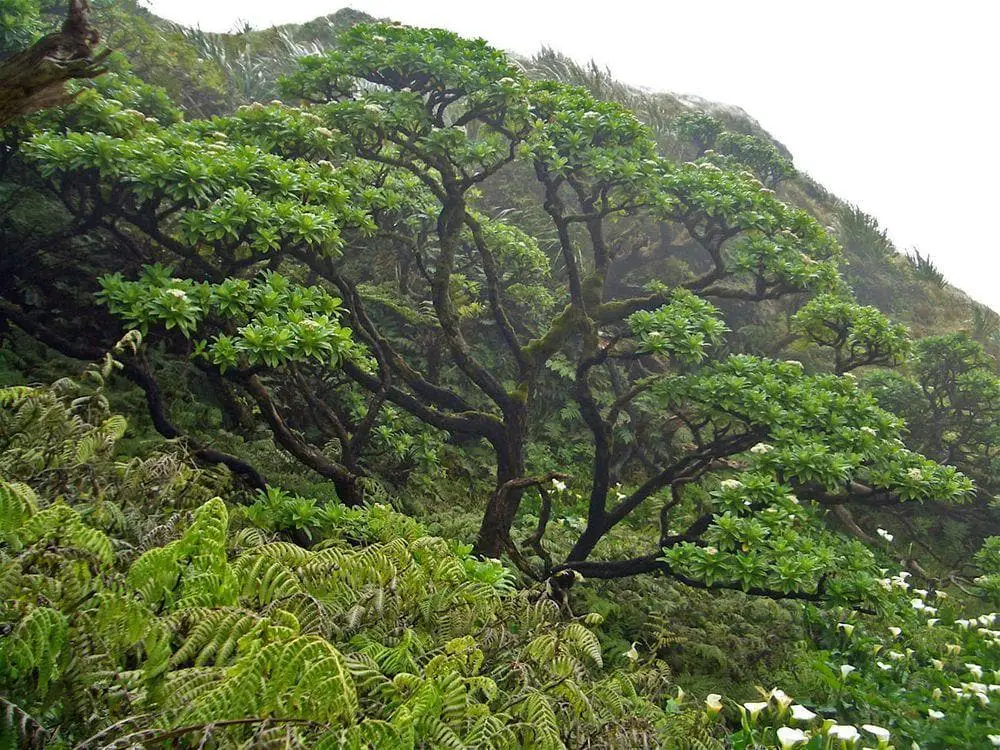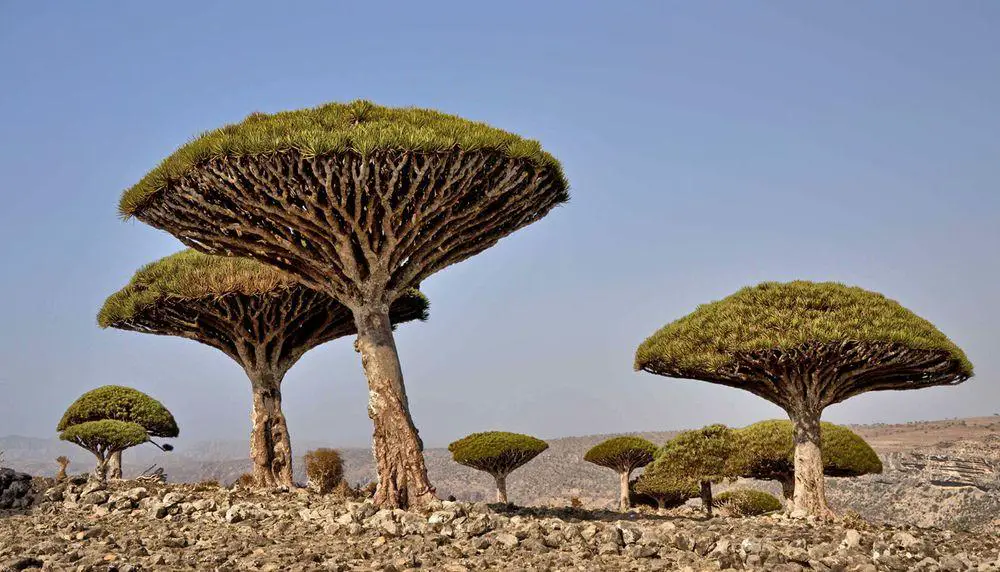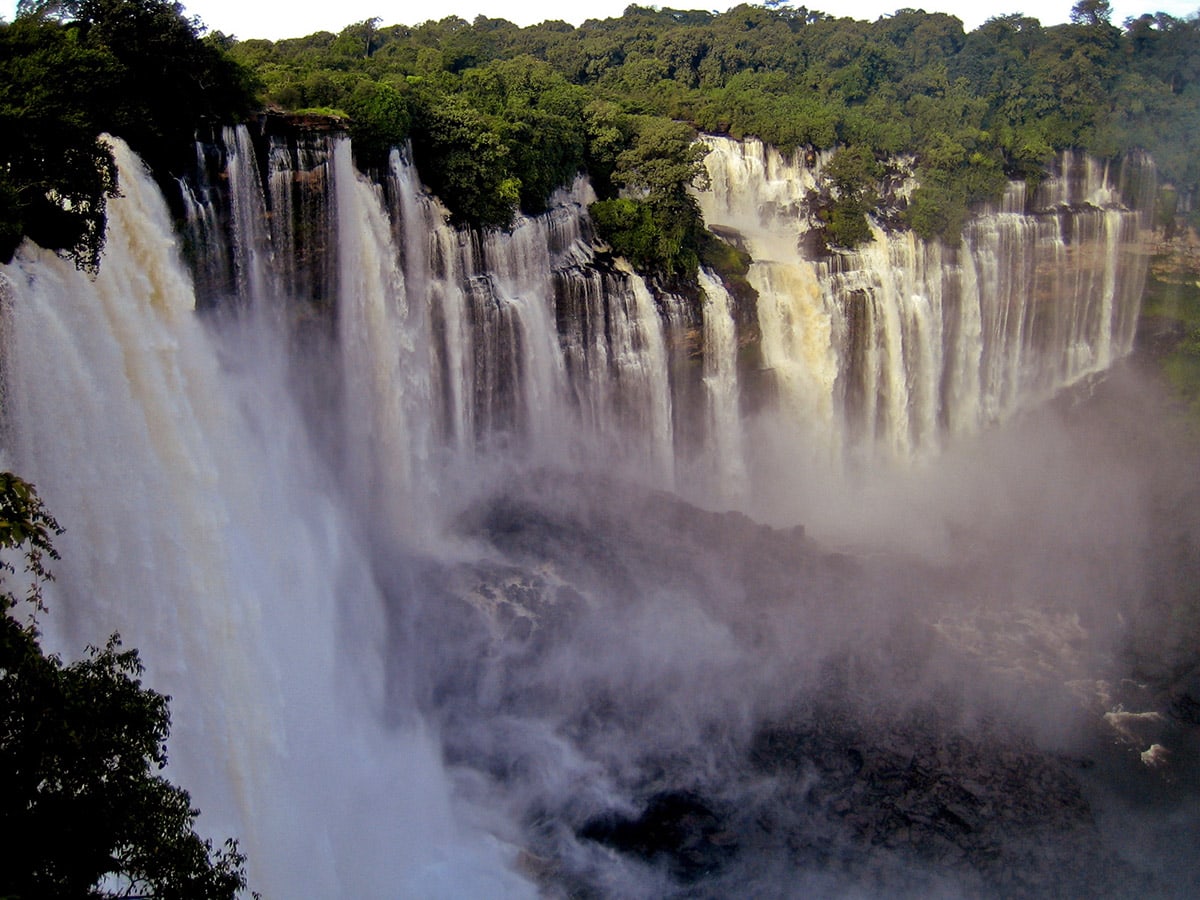Wonder
Diana’s Peak National Park

 In short
In short
On the highest hills of Saint Helena island still are found patches of unique forest – a relict of 10 million years old African tropical forest. Most of these tree fern thickets are protected in Diana’s Peak National Park.
 45.3%
45.3%
GPS coordinates
Location, address
Area
Map of the site
If you see this after your page is loaded completely, leafletJS files are missing.
 In detail
In detail
Relict of ancient African tropical forests
Saint Helena rose above sea level some 14 million years ago and the last volcanic activity took place some 8 million years ago. Over this long time period here have evolved specific species of plants and animals that are not met anywhere else in the world.
Before the coming of people nearly all the plants which were growing on the island were endemic. It is possible that on Saint Helena island we see relicts of African flora and fauna.
Even more interesting – it is possible that different ecosystems on the island represent relicts of African flora from different times.
The oldest are tree fern thickets on the summits of the highest hills on the island. These thickets could be similar to the moist tropical forest which grew in Africa in the Miocene epoch, some 10 million years ago. The humid climate around the summits of Saint Helena helped to preserve these species, while Africa itself became drier and only on the summits of higher African mountains has survived somewhat similar flora.
Endemic plants and animals
On Saint Helena island have been found 10 endemic genera of plants – and six of these genera and most of the endemic plant species are found only in the tree fern thicket. Here are found 14 species of ferns that are not found anywhere else in the world. Some of the endemic species in the fern thicket are:
- Black cabbage tree (Melanodendron integrifolium). Seedlings of this tree grow on the trunks of tree ferns.
- Petrobium arboreum – whitewood, one of tree species.
- She cabbage tree (Lachanodes arborea) – found only in a single patch.
- Sium burchellii – dwarf jellico, grows only in a tiny patch.
- St. Helena dogwood (Nesohedyotis arborea) – now very rare, only 147 individuals of this tree are known.
- St. Helena olive (Nesiota elliptica) – now grows only in captivity, outside the park.
- St. Helena tree fern Dicksonia arborescens.
- Wahlenbergia linifolia – large bellflower, now found only in a tiny patch.
Here are found many endemic species of fauna as well, such as:
- Blushing snail (Succinea sanctaehelenae) – small terrestrial snail, which is found in many places around the island but is most common in fern thicket.
- Loveridge’s hoverfly (Loveridgeana beattiei) – this insect depends on flowering of the endemic trees. If any of these trees will go extinct, hoverfly will die as well.
First national park in Saint Helena
Largest patches of tree fern thicket remain around the summit of the highest peak of Saint Helena Island, the 818 m high Diana’s Peak.
The indigenous vegetation of the lower parts of the island was largely eliminated by the 1750s, but tree fern thicket further up in the hills was largely intact until the 1850s. Then these forests were replaced by the plantations of New Zealand flax, introduced plants spread further into the forest. Now the remaining parts of the fern thicket (only 15.7 ha!) are very endangered, there are ongoing constant activities to eradicate alien plants in this area.
Around Diana’s Peak in March 1996 was created the first national park in Saint Helena. It is very small if compared to the better-known national parks around the world – just 81 ha. But this small microcosm provides endless opportunities to scientists and numerous impressive sights and experiences to tourists.
References
- Smith, Doug. A Rescue Plan for the Threatened Tree Fern Thicket of Diana’s Peak National Park, St Helena. 1996. Accessed in the 1st September 2013.
 Linked articles
Linked articles

Ecosystems
Biotope is a rather small area with uniform environmental conditions and a specific community of life. Wondermondo describes biotopes and ecosystems which have striking looks, look very beautiful, or have other unusual characteristics.

Wonders of Saint Helena
Saint Helena has an amazing array of landmarks – well preserved historical town and fortress, a unique forest with unique plants, and a desert with unique, giant insects. Saint Helena was the last home for one of the most famous personalities in world history – Napoleon.

Wonders of Africa
Africa has many outstanding wonders and some of the most surprising ones are the heritage of Egyptian civilization, the vernacular architecture of the Sahel region, tropical ecosystems, and others.
 Recommended books
Recommended books
Napoleon & St Helena: On the Island of Exile
Napoleonic historian Johannes Willms visits this strange colonial survivor and unearths both a past and present that disturbs and delights with observations far beyond the ghost of Bonaparte.
Island Saint Helena: British Overseas
With a Georgian town, rugged coastlines, giant salt rocks, sandy bays, and unique wildlife, Saint Helena is a piece of paradise in the middle of the Southern Atlantic. It’s not only about the destination… there’s so much to learn. Formerly, there was one way (RMS charter cruise) to commute to this isolated island to uncover one of the world’s best-kept travel secrets: the last home and mysterious death of the French Emperor, Napoleon Bonaparte.


